Yesterday, I wrote about an accident at Tokyo Haneda Airport that resulted in five casualties. Earlier today, I wrote about an investigation having been launched by the Japanese authorities. Now, initial statements on what happened – in terms of ATC communications – have been released.
Continue reading to learn more.

JAL A350 and Japan Coast Guard Dash 8 Collision
To recap what happened on January 2, 2024:
- A JAL A350 was landing on runway 34R at Tokyo Haneda Airport when it hit a Japan Coast Guard Dash 8 that was on the runway
- Everyone onboard the A350 including 367 passengers (including 8 infants) and 12 crew members (3 pilots and 9 flight attendants) evacuated safely with just 14 people sustaining injuries; two pets were onboard and could not be rescued
- The Dash 8’s captain survived and is in critical condition, the remaining five of the aircraft’s six crew members died
- Ministry of Land, Infrastructure, Transport and Tourism’s (MLIT) Japan Transport Safety Board launched an investigation into the accident; French investigators and Airbus experts will provide support
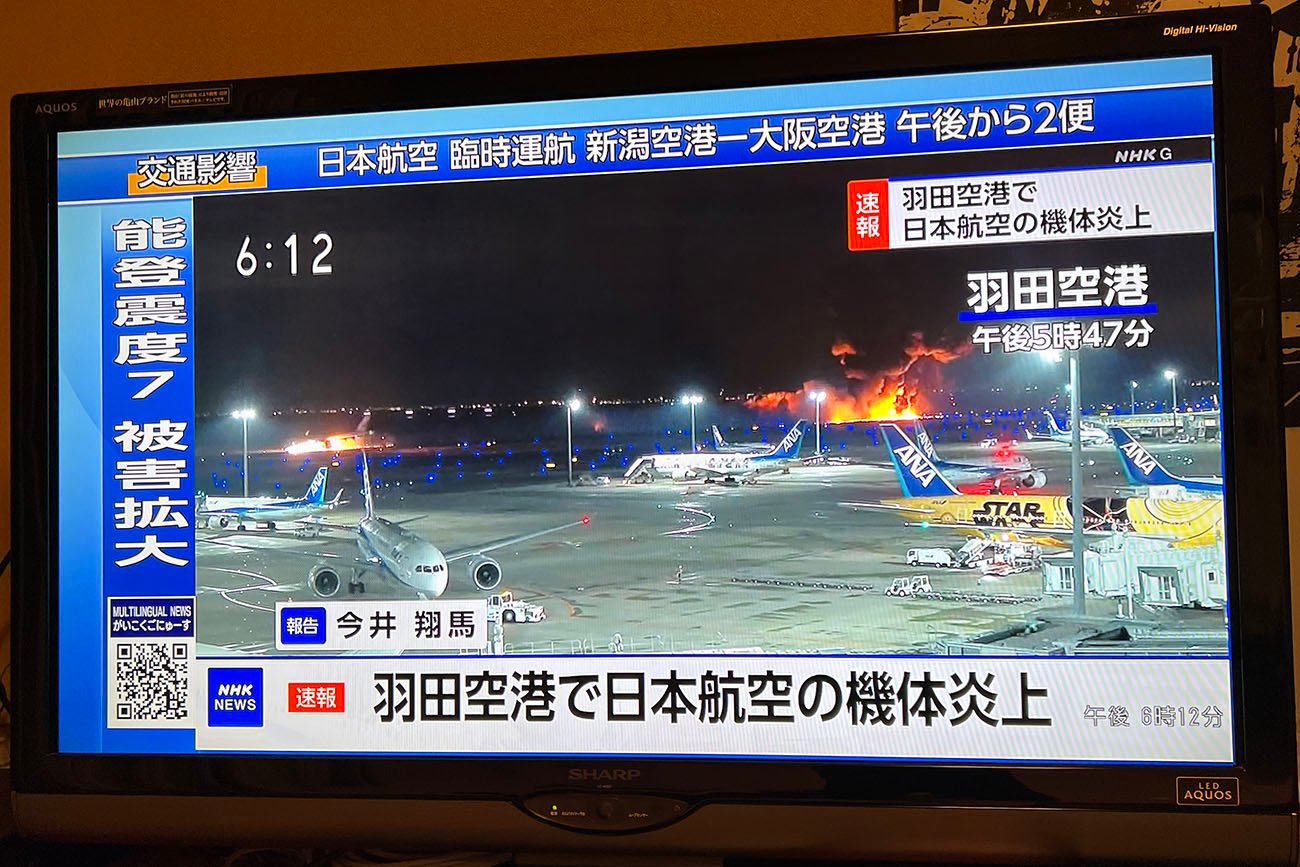
January 11, 2024, Haneda Airport Collision Updates
Below are updates about the accident from January 11, 2024, in chronological order. (All times are Japan Standard Time.)
9:00PM – JCG Keeps Haneda Flights Suspended, Audio Warnings Under Consideration
Yesterday, I wrote in detail about the emergency measures that MLIT implemented or plans to implement in the aftermath of the accident. Among others, those include banning the use of take-off sequence information (“No. 1,” etc.) in instructions from air traffic controllers to pilots.
Today, Yomiuri reported that for the time being, the Japan Coast Guard plans to keep flights from its Tokyo Haneda base suspended. Operations will stay suspended until “the safety of operations from the base is reconfirmed and because there is a need to take care of the mental health of the Coast Guard members.”
Before the accident, six Japan Coast Guard aircraft were based at Tokyo Haneda. Of the five that are left, one has been damaged in a collision with a ground service vehicle soon after the accident and is currently not airworthy.
Separately, Kyodo reported that MLIT is considering implementing an audio warning system that would notify air traffic controllers about runway incursions. It was previously reported the current warning system provides visual notification only.
January 8, 2024, Haneda Airport Collision Updates
Below are updates about the accident from January 8, 2024, in chronological order. (All times are Japan Standard Time.)
9:30PM – Haneda Airport Back to Having All Four Runways Open
At midnight today, Tokyo Haneda Airport’s runway 16L/34R was reopened, bringing the airport back to full capacity for the first time since the January 2, 2024, accident.
The first flight to use the runway was ANA flight 160 bound for New York JFK. The flight, scheduled to depart at 10:55PM, took off from the runway just a couple of minutes after midnight.
While most of the operations at the airport are back to normal now, JAL still shows nine flights (mainly to/from Osaka Itami) as being expected to either be severely delayed or canceled tomorrow. The airline has not announced any cancelations for January 10, 2024, and beyond as of right now.
January 7, 2024, Haneda Airport Collision Updates
Below are updates about the accident from January 7, 2024, in chronological order. (All times are Japan Standard Time.)
8:30PM – Runway 16L/34R Set to Reopen in a Few Hours
Around 4:15PM on January 7, 2024, the work on removing the JAL A350 wreckage from the accident site was finished. With that, the remains of both aircraft that collided on January 2, 2024, have been moved away.
With that, it was reported that runway 16L/34R (commonly referred to as “runway C” in Japan) of Tokyo Haneda Airport is set to reopen on January 8, 2024, at 12:00AM. The reopening of the runway will alleviate the capacity constraints that the airport has been experiencing since the accident.
At this point, the only limitation when it comes to using the reopened runway seems to be the inability to use the new approach routes that fly over central Tokyo when southerly operations are in effect due to damage suffered by runway 16L PAPI (precision approach path indicator) lights. It is expected to take about a month for those to be fixed.
While JAL is still expected to cancel a handful of flights tomorrow, the list is much shorter than it was over the last few days. ANA plans to operate all originally scheduled flights.
January 6, 2024, Haneda Airport Collision Updates
Below are updates about the accident from January 6, 2024, in chronological order. (All times are Japan Standard Time.)
9:40AM – Air Traffic Controllers Missed a Warning Alert
Earlier, it became clear that the collision occurred about 40 seconds after the Japan Coast Guard Dash 8 entered Tokyo Haneda Airport’s runway 34R via the C5 intersection.
This morning, Nikkei reported that Tokyo Haneda Airport’s air traffic control team missed a warning alert from a system that visually (albeit without any audio warning) notifies air traffic controllers about a plane entering a runway while another one is landing.
It is reported that the system was working properly at the time of the accident.
January 5, 2024, Haneda Airport Collision Updates
Below are updates about the accident from January 5, 2024, in chronological order. (All times are Japan Standard Time.)
7:40PM – Runway 16L/34R Expected to Reopen on January 8
At a press conference around 5PM, Tetsuo Saito, the Minister of Land, Infrastructure, Transport and Tourism Minister, stated that Tokyo Haneda’s runway 16L/34R that is currently blocked by the JAL A350 wreckage could be reopened as early as on January 8, 2024. This is in line with JAL’s plan to clear the aircraft off the accident site by January 7, 2024.
That said, the runway’s reopening could be delayed depending on the condition of the runway and the extent of repairs needed.
Even after the runway’s initial reopening, it will not be possible to use the runway as part of the (relatively) new approach route that takes aircraft over Tokyo’s city center. The reason behind that is that the runway’s PAPI (precision approach path indicator) lights were damaged in the accident. It is expected to take about a month for the system to be fixed.
Separately, it was reported that MLIT stated it is possible that the Dash 8 crew misunderstood its communication with the air traffic controller and thought it had received a take-off clearance.
5:15PM – JAL A350 to Be Moved Off Runway in the Next Couple of Days
While at Haneda today, I was surprised at the speed at which the JAL A350 wreckage was being cleared away from the accident site. When I got to the airport, multiple cranes and excavators – some with hydraulic shears – were busy taking the wreckage apart and loading it onto trucks.
At one point, around 11:45AM, the wreckage appears to have briefly ignited. I was on Terminal 3’s observation deck at the time and could see a cloud of black smoke appear.
It appears that with initial inspection of the wreckage over, the work on moving the remains began this morning around 9AM. JAL is reported to be targeting January 7, 2024, as the completion day. As I mentioned earlier, the Dash 8 appeared to have been completely moved off the runway by this point.
Once the A350 is moved away, the runway will need to be inspected and repair work done before it can be opened again. As such, the runway 16L/34R closure will continue for at least a few days after that if not longer.
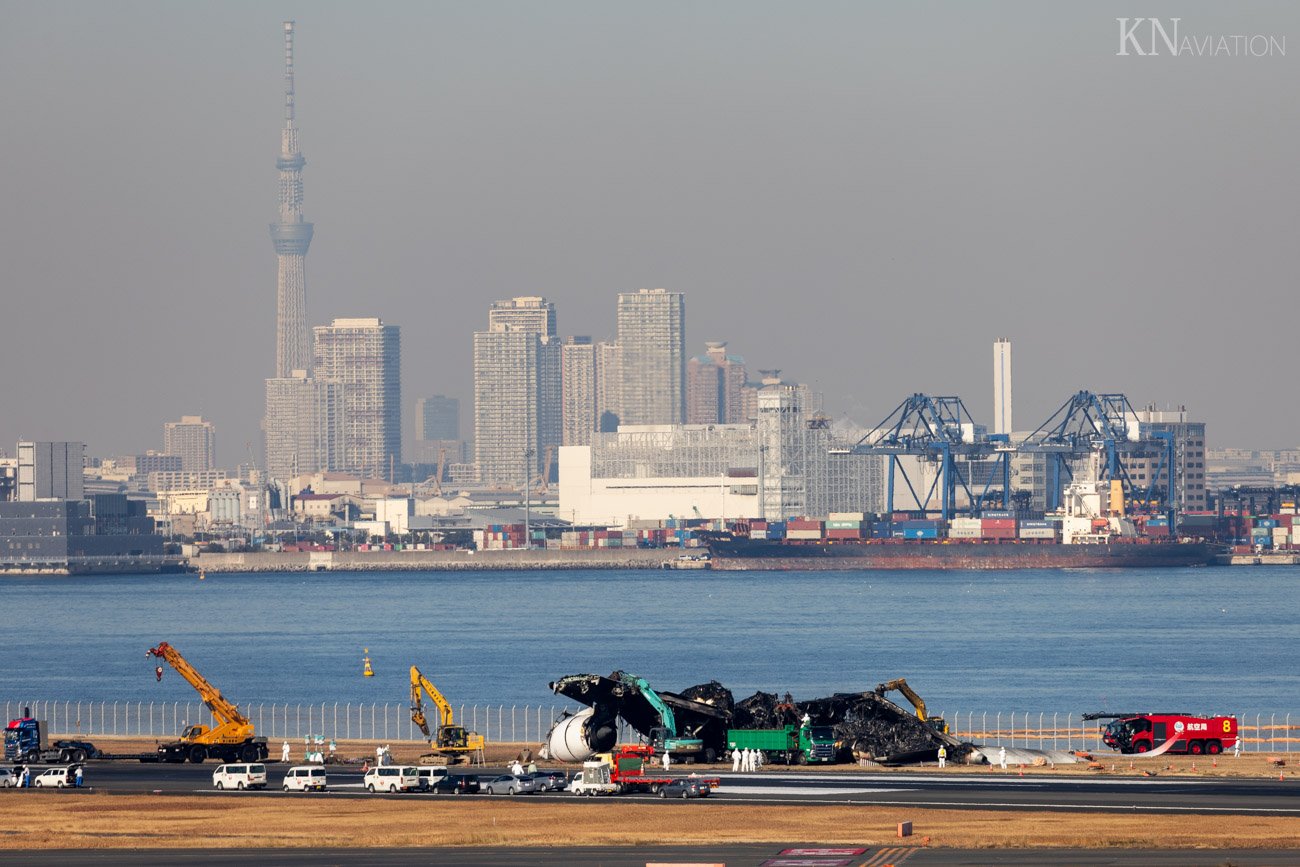

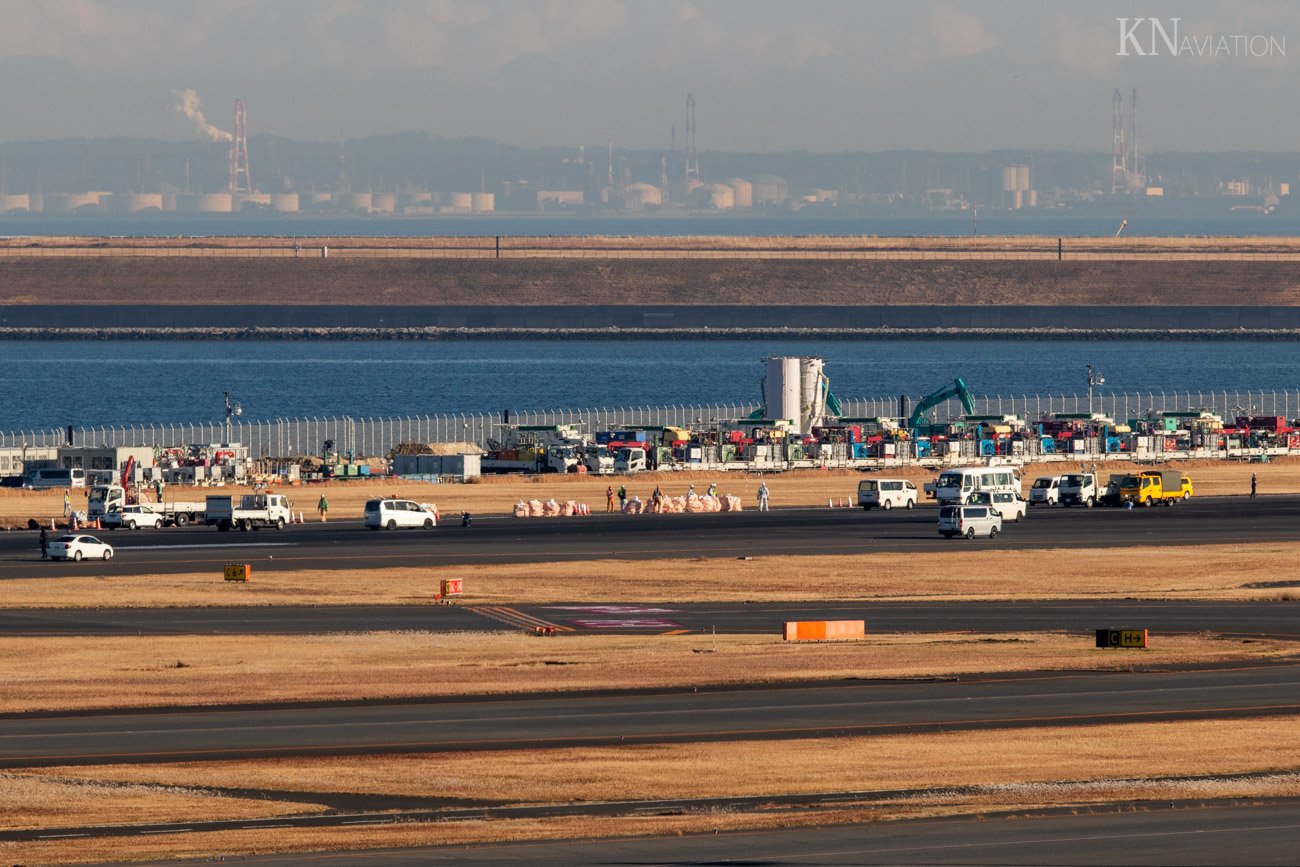
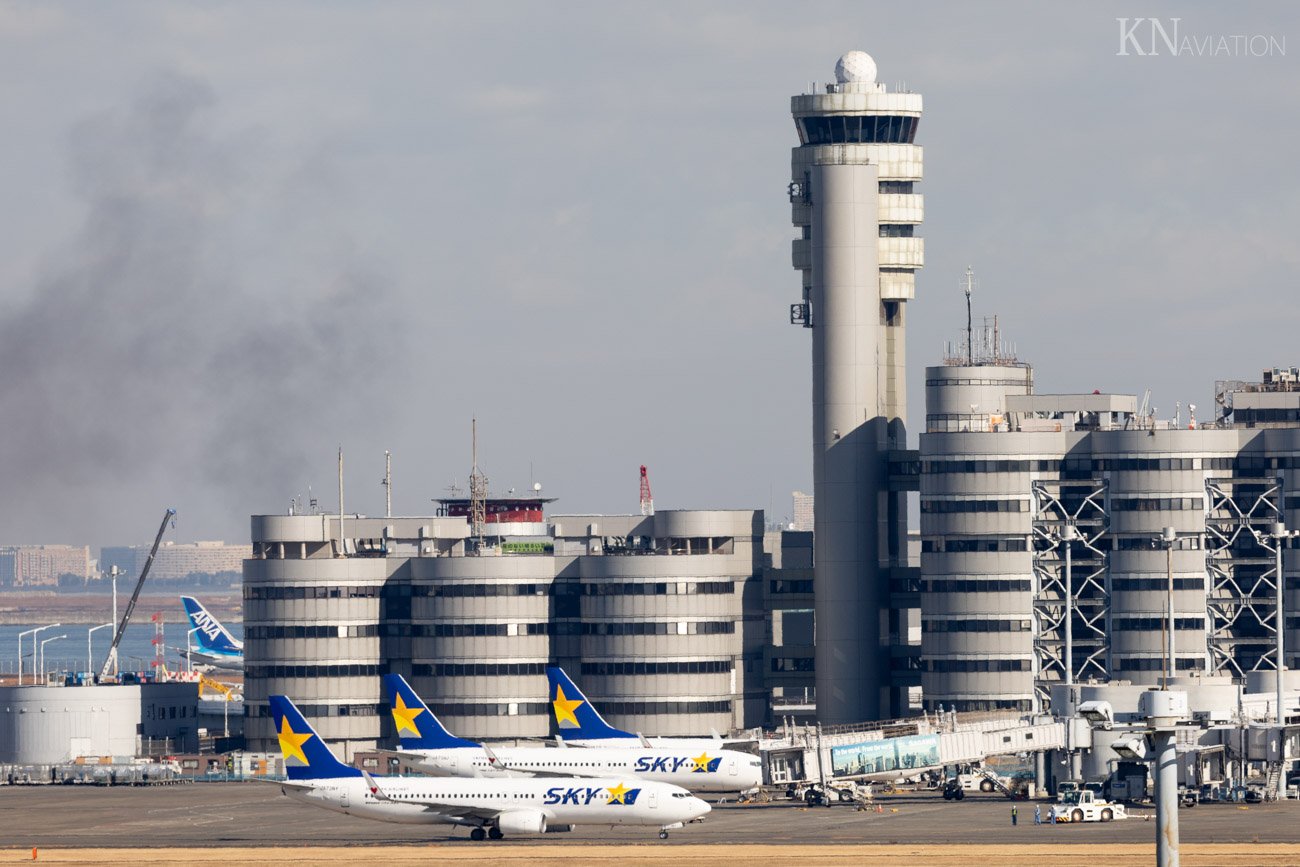
4:00PM – Runway 23 in Use for Landings Too
Shortly after 2PM, runway 23 was put into use for landings too – a StarFlyer A320 was the first aircraft to land on the runway. With that, two runways are available for landings (same as during regular operations) and one for take-offs (one less than during normal operations.
During normal times, runway usage during southerly operations changes at 3PM to 16L and 16R for landings and 16R and 22 for departures. For now, it appears that this configuration will not be used while runway 16L/34R is closed.
1:25PM – Southerly Operations Now
While I was writing my previous update, Haneda Airport changed to southerly operations. With that, runway 22 is being used for landings and runway 16R for take-offs. Like with northerly operations, the capacity is constrained due to only two runways being in active use.
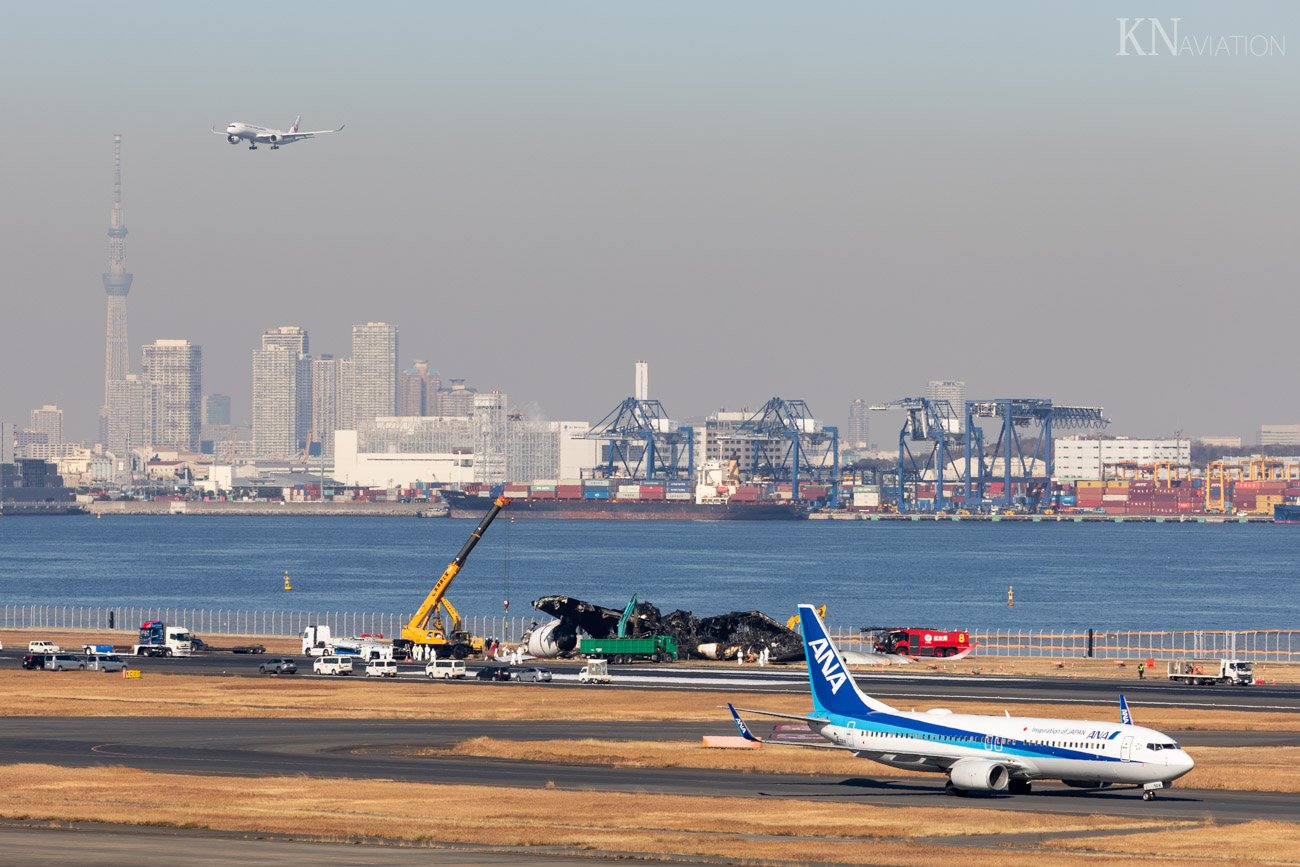
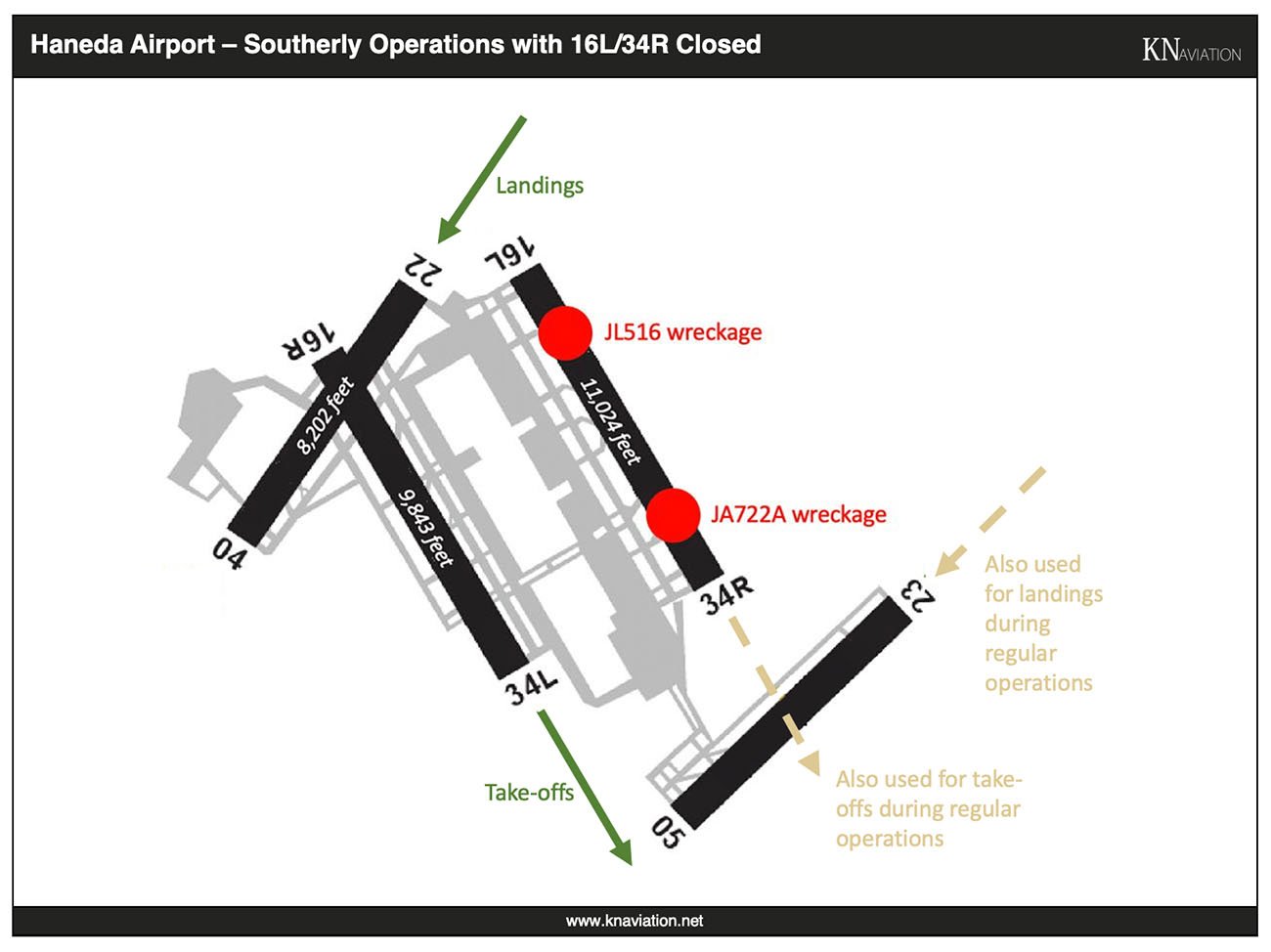
12:30PM – JAL A350 Left Wingtip Cleared Away
For the first time since the accident, I made my way to Haneda Airport. While flights remain delayed due to the airport’s constrained capacity, all three terminals do not seem too crowded at this point.
Over the last hour or so, the left wingtip of the JAL A350 wreckage has been moved away, and work on the wreckage continues. The Dash 8 remains appear to have been mostly or completely to the side of the runway or away.
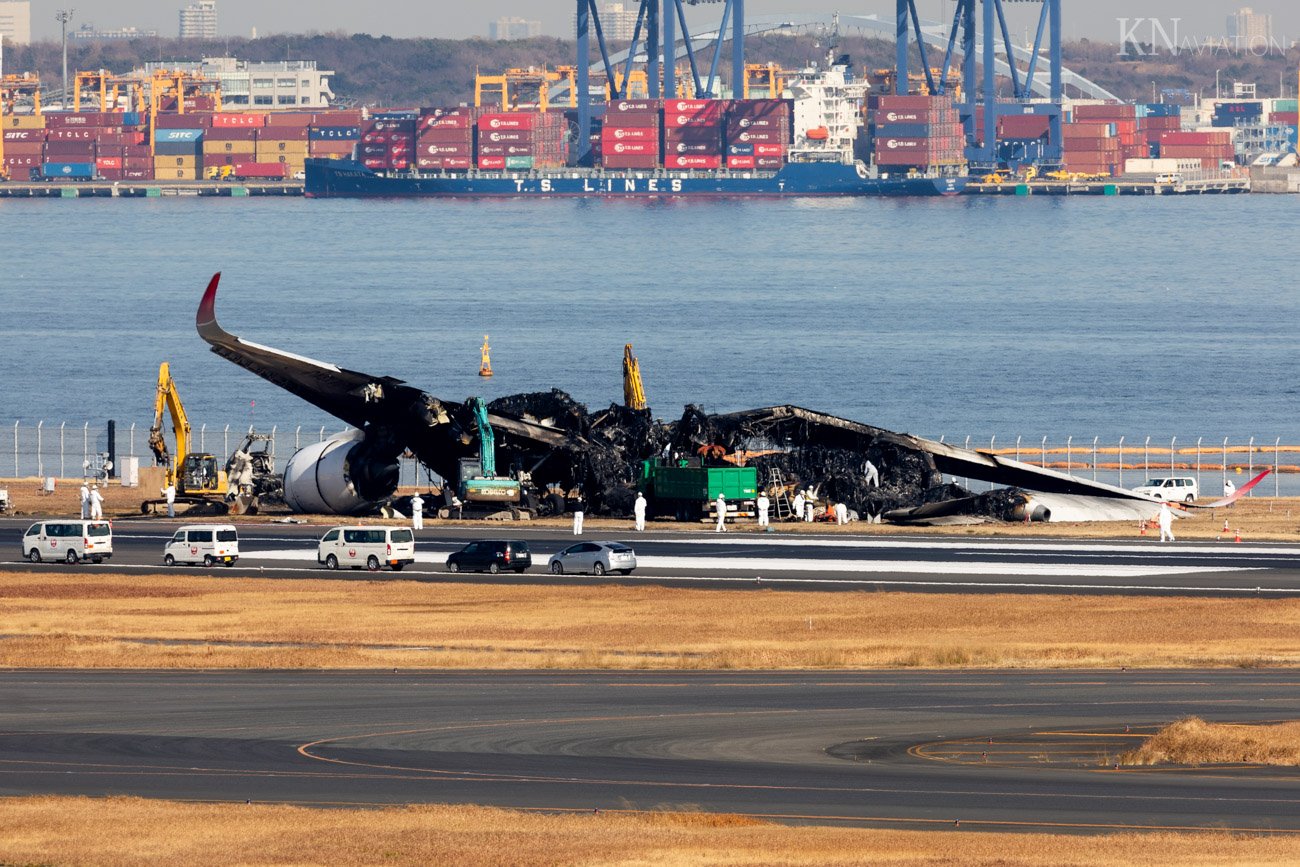
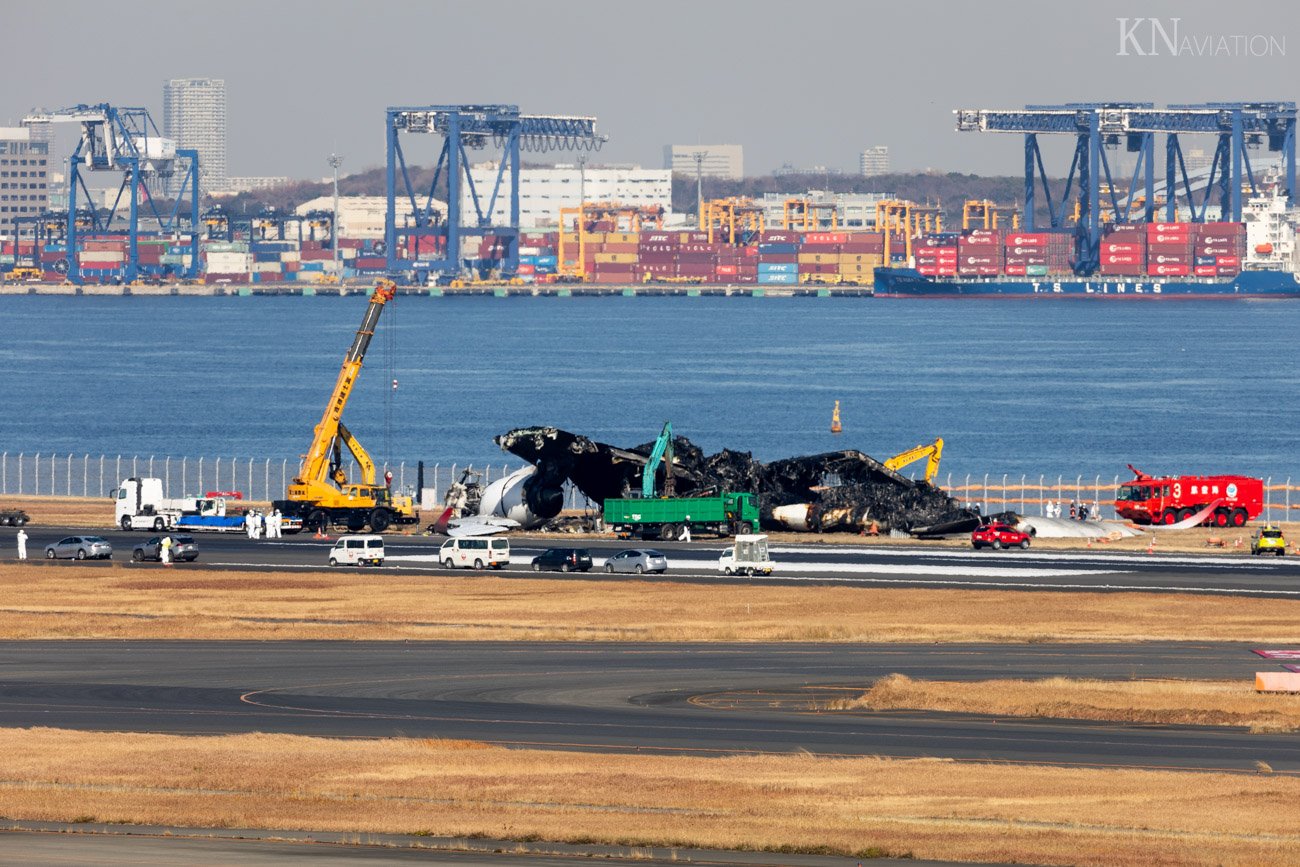
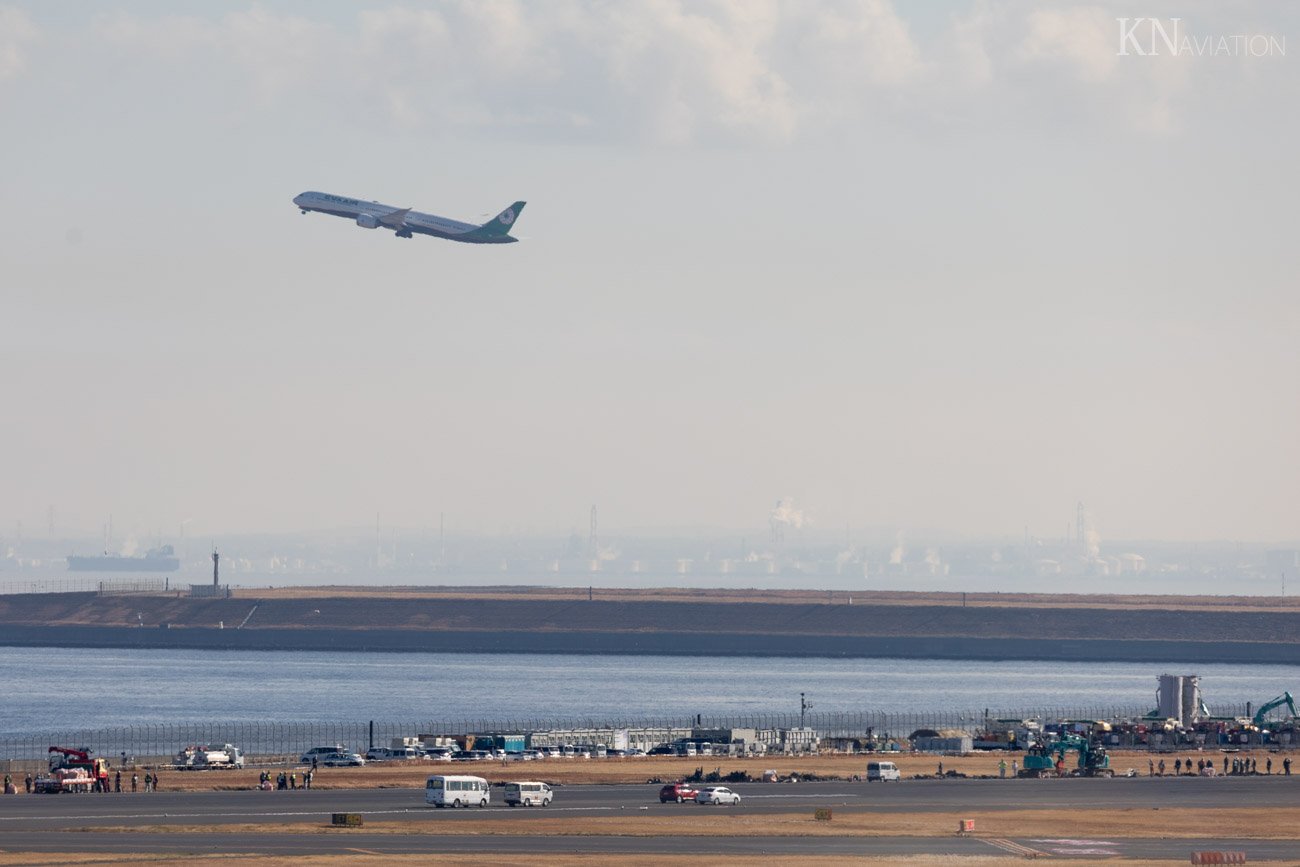
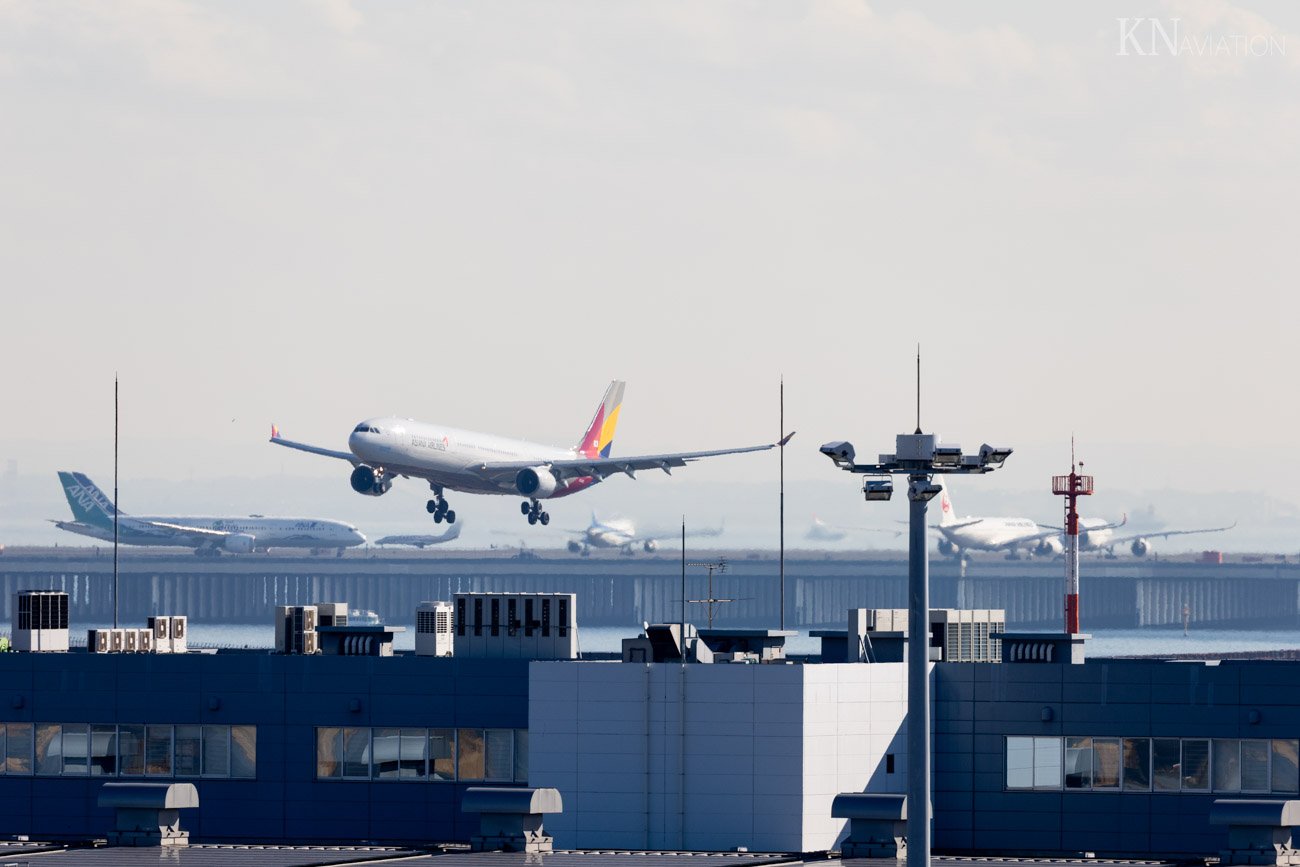
10:30AM – NTSB to Assist Japanese Investigators with Data Analysis
Reuters reports that the Chair of the National Transportation Safety Board (NTSB) Jennifer Homendy said the NTSB will provide support to Japanese investigators in analyzing data from the accident.
It was reported that the Japanese investigators requested help related to analyzing a Honeywell-made recorder.
10:10AM – MLIT Temporarily Allows Runway 34L Departures
Earlier today, MLIT released a memo stating that runway 34L can now be used for take-offs between 6AM and 10PM when requested due to performance. This should help airlines that are currently operating flights through other domestic airports due to not being able to take off from Haneda’s shorter runway 05 at full weight.
The runway can now also be used for take-offs by domestic flights in case crosswind prevents safe 05 take-offs.
Normally, when northerly operations are in effect, aircraft heading to the north take off from runway 34R while aircraft heading to the south and west take off from runway 05. Flights from the west and south land on 34L while flights from the north land on 34R.
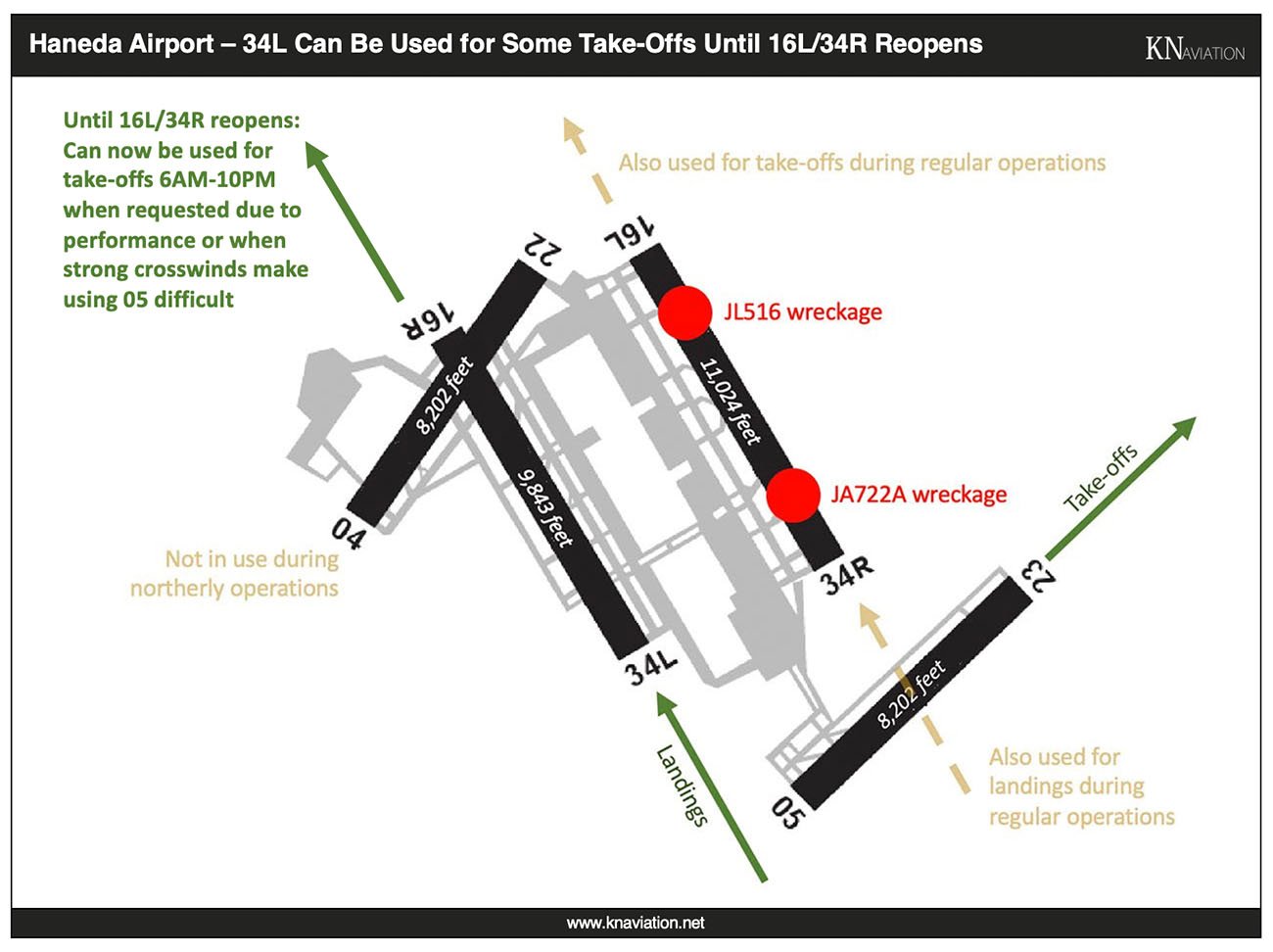
7:30AM – Over 200 Flights Canceled and More Affected
The runway closure caused by the January 2, 2024, accident is continuing to constrain Haneda Airport’s capacity considerably, leading to cancelations and delays. Over 200 flights – mostly domestic ANA and JAL connections – that were scheduled to operate on January 5, 2024, were canceled.
Some long-haul flights are expected to operate via Tokyo Narita again due to runway 05’s limitations.
With investigators still working on the accident site, the situation is expected to continue for the foreseeable future. Especially so given that the runway will also have to be carefully inspected and potentially repaired once the wreckages are moved.
Given the situation, both ANA and JAL are waiving ticket change and cancelation fees for the time being. The former for flights to and from Haneda until January 8, 2024, and the latter for all domestic flights until March 31, 2024, and all international flights until April 20, 2024.
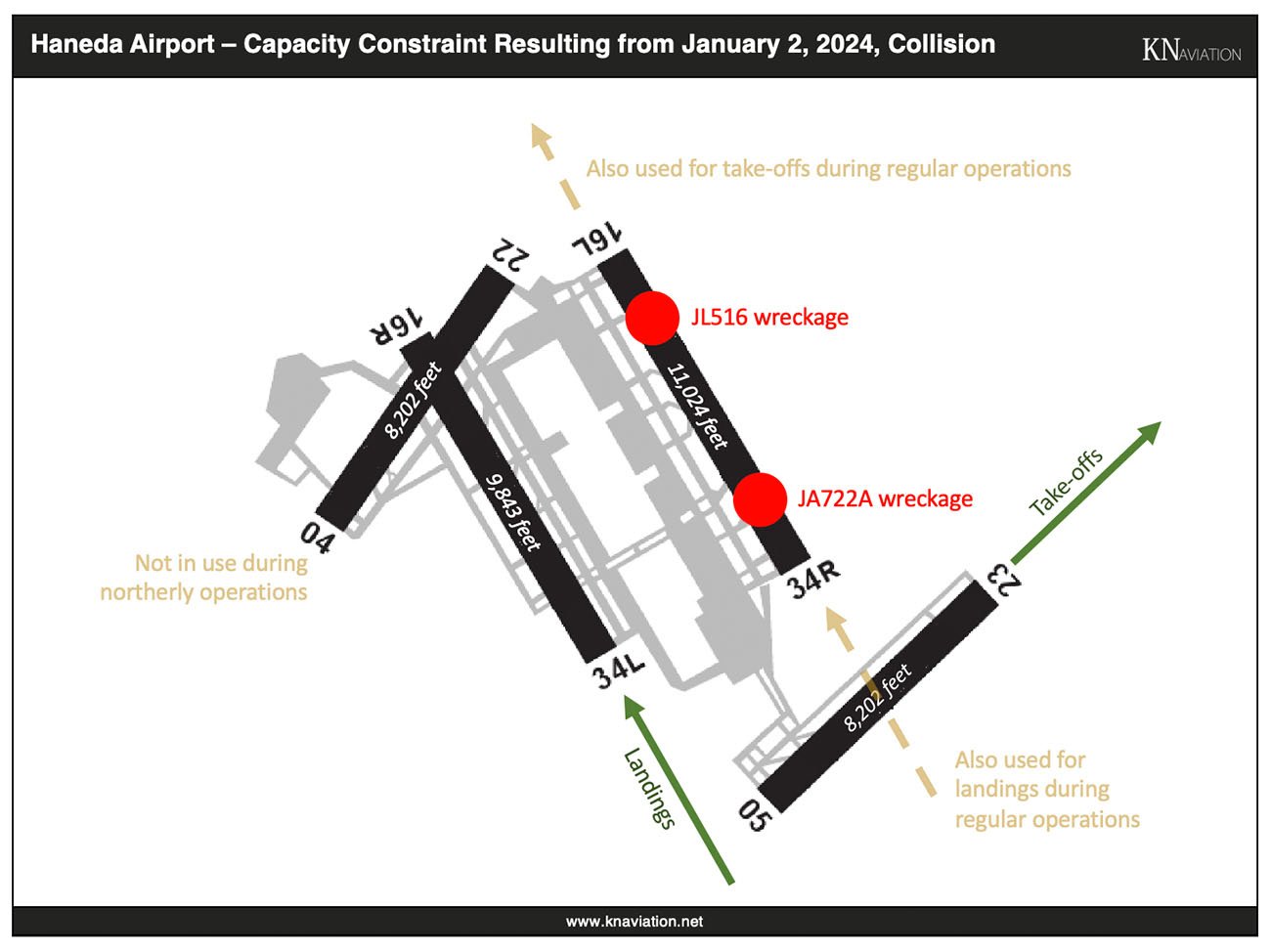
January 4, 2024, Haneda Airport Collision Updates
Below are updates about the accident from January 4, 2024, in chronological order. (All times are Japan Standard Time.)
10:15PM – Investigators Find JL516’s Flight Data Recorder
According to Yomiuri, Japan Transport Safety Board investigators located the flight data recorder (i.e. the “black box” that records information like altitude and speed) of the JAL A350 that crashed on January 2, 2024. They are still looking for the cockpit voice recorder.
Both the flight data and cockpit voice recorders of the Dash 8 were found yesterday.
8:30PM – British Investigators Arrive, Police Finishes Inspecting Runway
Kyodo reported that on January 4, 2024, the police finished inspecting the runway on which the accident occurred and will continue inspecting the two wreckages.
In separate news, it was reported that the United Kingdom has dispatched a team of investigators who will join the Japanese and French investigators (and Airbus experts) on site. The A350’s engines were made by a British company – Rolls-Royce.
7:55PM – Stop Bar Lights at C5 Intersection Were Out of Operation
While this was pointed out quite some time ago, I thought I would add it here for completeness.
At the time of the accident, there was a NOTAM about stop bar lights (i.e. the lights that provide a visual indication of whether or not a runway is clear) not working on runway 16L/34R’s intersections (C1 through C14 including C5 where the Dash 8 entered the runway).
A Notam active at the time of the Tokyo-Haneda runway collision shows that the Stop Bar lights for all taxiways leading up to runway 34R were unserviceable. Taxiway centreline lighting at the C/C5 intersection was partially unserviceable. pic.twitter.com/IjfL5rcofW
— Aviation Safety Network (ASN) (@AviationSafety) January 4, 2024
6:15PM – JAL Details Evacuation
A few hours ago, JAL outlined the details of the A350’s evacuation:
- Evacuating everyone from the aircraft took until 18 minutes after the aircraft touched down; at 6:05PM, the captain was the last person to evacuate
- The cockpit crew didn’t initially realize there was a fire and was informed about that by the chief purser
- The evacuation started using the L1 and R1 exits at the front of the aircraft, later the R4 exit in the rear of the aircraft was opened too; the remaining exists could not have been used due to the fire
- The cabin crew decided to deploy the slides before receiving such instructions from the cockpit crew
While it took 18 minutes until the last person onboard – the captain – evacuated, that includes the time it took the aircraft to come to a full stop (it rolled down the runway for about 1 km after landing) and the crew to understand the situation before starting evacuation.
12:10PM – Insurance Expected to Cover JAL’s 15 Billion Yen Loss
Earlier today, Nikkei reported that JAL will record a 15 billion yen (just over $100 million) loss related to the airframe involved in the accident. Later on, Reuters reported that the aircraft was insured against all risks for $130 million with AIG being the underwriter.
Theoretically, the insurance should cover the entire loss. When that will happen is not clear, though.
11:00AM – Flights Out of Haneda Delayed, Dash 8 Captain’s Words
With the aircraft wreckages blocking runway 16L/34R, Tokyo Haneda continues to operate with only three out of its four runways open. With northerly winds, two out of the three open runways are being actively used – 05 for take-offs and 34L for landings.
Due to the constrained capacity, the majority of flights (especially domestic ones) are experiencing notable delays, albeit not as significant as yesterday’s delays, and some were canceled.
Additionally, some long-haul flights are departing Tokyo Haneda with less fuel than required and making tech stops at Tokyo Narita/Nagoya Chubu due to runway 05 limitations. JAL flight 45 is one such flight – the aircraft flew from Haneda to Narita where it is currently getting ready to fly on to its final destination, Paris CDG.
Separately, it was reported that the Dash 8 captain told police investigators that the rear part of the aircraft suddenly ignited. It was also reported the captain was, right after the accident, not aware a collision happened.
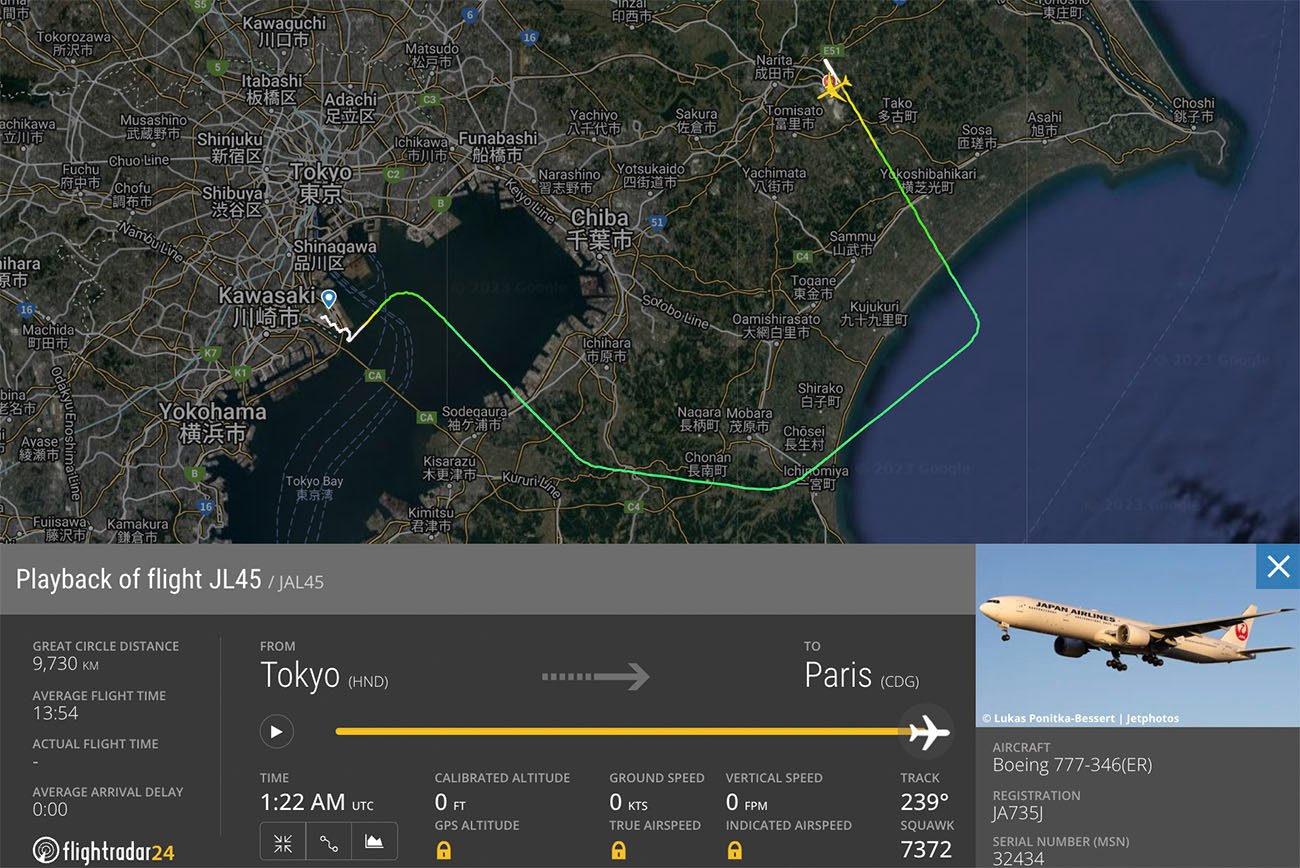
January 3, 2024, Haneda Airport Collision Updates
Below are updates about the accident from January 3, 2024, in chronological order. (All times are Japan Standard Time.)
10:30PM – Operations at Haneda Continue to Be Disrupted Massively
While Haneda Airport is open, its capacity is constrained considerably due to runway 16L/34R continuing to be closed.
This is resulting in hours-long delays for the majority of the flights (especially domestic ones) that were not canceled in the first place. Some long-haul flights made/are expected to make a stop at Tokyo Narita to refuel due to performance restrictions of the runway used for departures.
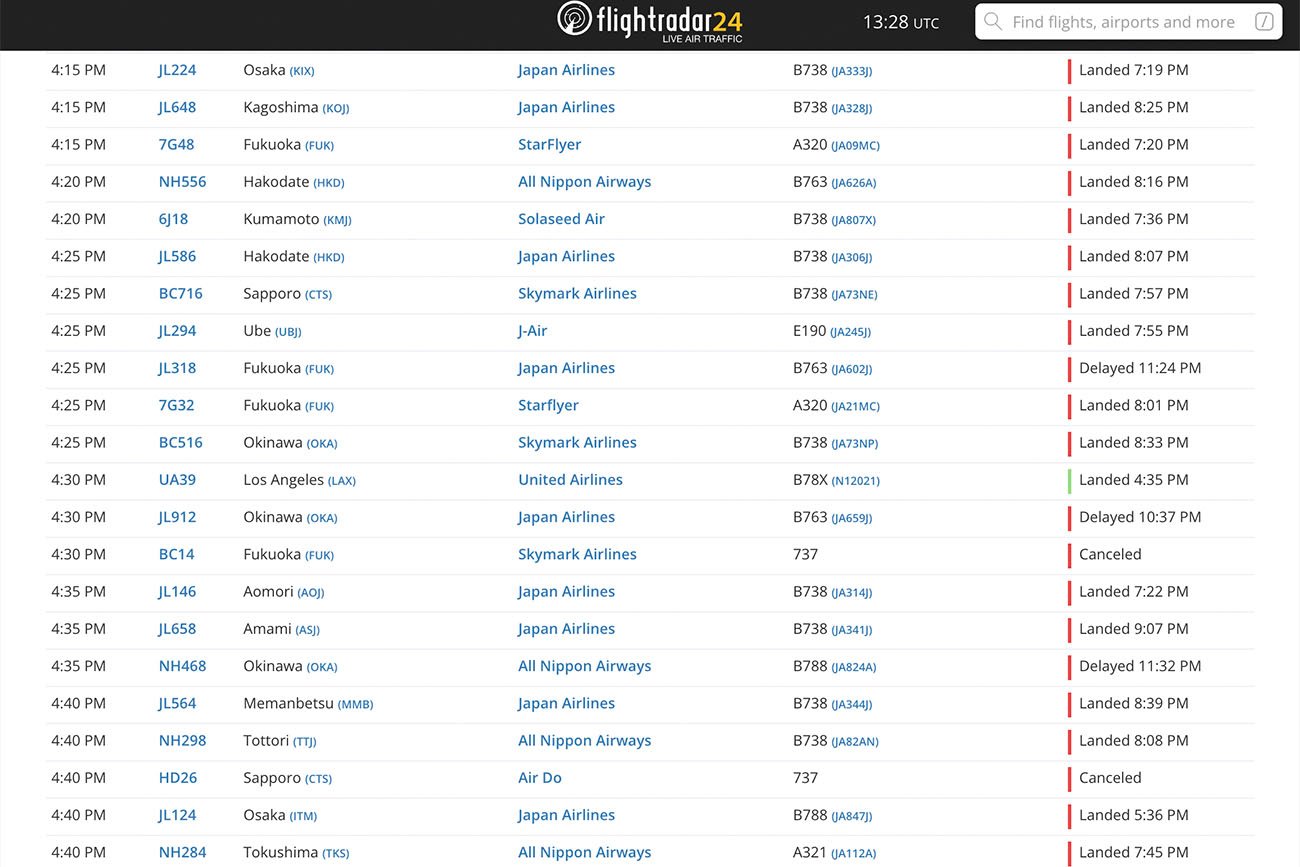
9:40PM – JAL Crew Did Not See the Dash 8, Two Pets Were Onboard
At a press conference about yesterday’s accident, JAL stated that the cockpit crew of the A350 did not see the Japan Coast Guard Dash 8.
It was also reported that two pets were onboard the flight and could not be rescued.
6:45PM – JTSB Confirms Dash 8 Was Not Cleared to Enter the Runway
Multiple media outlets report now that the Japan Transport Safety Board has released a transcript of four minutes of communications between the two flights and ATC and that the transcript confirms that while the Dash 8 was cleared to taxi to and hold short of runway 34R, it was not cleared to enter the runway.
Previously, I posted a transcript translated back into English from the Japanese translation provided by MLIT below. Since then, I found the original English transcript which I posted in full here.
6:20PM – Dash 8 “Black Boxes” Found
An interview with one of Japan Transport Safety investigators revealed that both cockpit voice and flight data recorders were retrieved from the Japan Coast Guard Dash 8. The investigators will now have to see whether any data can be salvaged from the devices.
Current information suggests the Dash 8 likely did not have the clearance necessary to enter the runway. Because of that, if the investigators can download the cockpit voice recorder data successfully, it could be a major help in moving the investigation forward.
Separately, Yoshimasa Hayashi, Chief Cabinet Secretary of Japan said that there is no estimate yet as to when the currently closed Haneda runway (16L/34R) will be reopened.
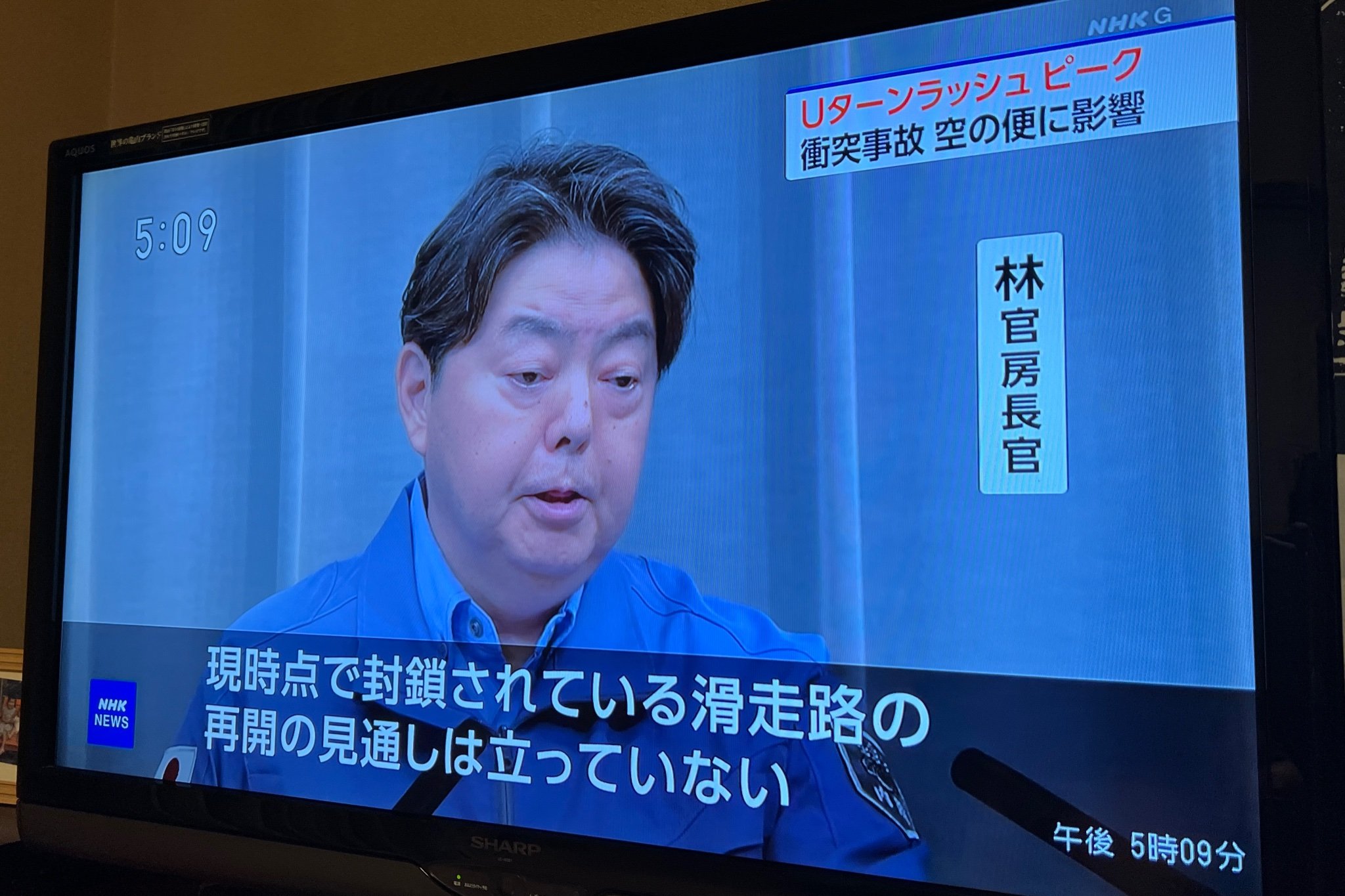
3:15PM – Around 30 Police Investigators on Site
According to TBS NEWS DIG, around 30 police investigators have been working on the crash site from about 11:00AM today, primarily inspecting the JAL A350 wreckage. They will also inspect the remains of the Dash 8 at a later point.
The Metropolitan Police Department is also reported to have said it will conduct autopsies of the five Dash 8 crew members who lost their lives to determine their cause(s) of death.
1:20PM – Conflicting Initial Statements on ATC Clearances
Around noon on January 3, 2024, NHK reported that MLIT confirmed the following:
- Flight JL516 was cleared to land on runway 34R
- The Japan Coast Guard Dash 8 was instructed to taxi and hold short of runway 34R
At the same time, it is reported that according to a Japan Coast Guard member, the Dash 8’s captain stated “I received take-off clearance” immediately following the accident.

Important: No Conclusions Have Been Made Yet
At this point, the investigation is ongoing and it is important not to jump to any conclusions or put blame on any single person involved in the accident.
While the MLIT has confirmed that JL516 was cleared to land and that the Dash 8 was instructed to hold short of the runway, it has not explicitly stated that the Dash 8 had not received landing clearance from air traffic control at any point after being instructed to hold short.
While it has now been confirmed that the Dash 8 was not cleared for take-off, there are still many questions that need to be answered before any conclusions can be made as to what exactly and to what extent contributed to the accident.
Among others, the investigators will need to figure out:
- Why did the Dash 8 crew misunderstand the instructions and enter the runway despite being told to hold short?
- Did the air traffic control staff miss something (e.g. not look at the radar, etc.) that could have prevented the accident?
- At what point did the A350 crew see the Dash 8 and could it have reacted differently (i.e. initiated a go-around) in time?
- What did the Dash 8 crew see when they looked right (assuming they did so) before entering the runway?
The answers to these and many other questions will help investigators figure out what factors contributed to yesterday’s accident and, more importantly, what measures can be implemented going forward to avoid a similar tragedy in the future.
Summary
Initial reports from the investigators suggest that the JAL A350 was cleared to land while the Dash 8 was instructed to taxi to and hold short of runway 34R that the A350 was approaching. The Dash 8’s captain is, in a conflicting statement, reported to have said the aircraft received a take-off clearance.
Even assuming the Dash 8 did not receive a take-off clearance, there are still many questions that the investigators will need to answer before any conclusions can be made on what contributed to the accident.
Going forward, this will be the article that I will keep updated regularly with any news regarding the investigation.
